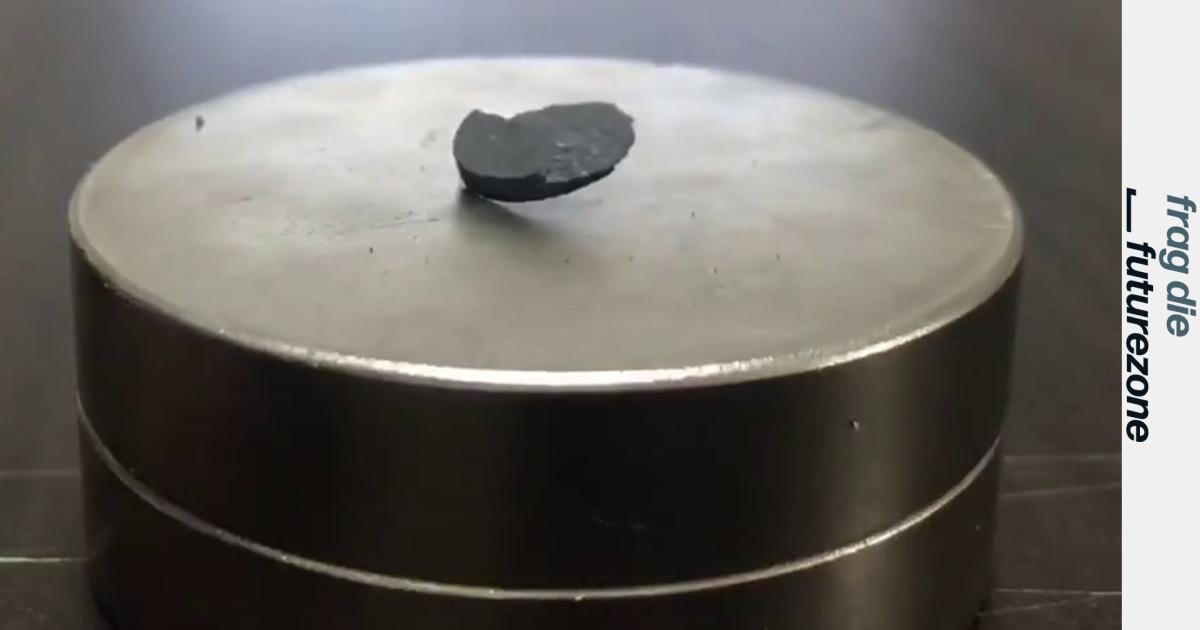Carolyn Caines
“Researchers claim to have discovered superconductors at room temperature.”: This discovery was announced in July 2023 as one of the largest potential discoveries Scientific sensations of this century Celebrate – if that’s true.
The news spread not only in the research community, but also on social media. But what happened to LK-99? Now it appears a new study finally clarifies whether or not it is a superconductor.
Presumed discovery
A group of physicists from Korea University He claimed at the time, in one Research draft Subject LK-99 To be created. This has superconducting properties, so it can Conducts current without resistance.
What is special: It must have these properties Room temperature to have. That would make the LK-99 a lot more effective And easier to deal with Of the previous superconductors, they were usually cooled to temperatures between -135 and -196 degrees Celsius.
The LK-99 is supposed to establish a connection Lead and copper And phosphate He is. According to Korean scientists, LK-99 shrinks slightly, compressing itself, which is crucial to its superconducting ability. Moreover, the detected superconductivity should reach a level 127 degrees Celsius function thus allowing a variety of applications that were not previously possible. Almost every device with a battery will last longer because of this No energy losses It occurs between the battery and the current collector. Because less waste heat is generated, data centers, as well as gaming consoles and laptops, can Avoid active ventilation Or at least reduce it significantly.
➤ Read more: Potential breakthrough: Finding a room-temperature superconductor
Controversial video evidence
Scientists documented their discovery Videoswhere the material appears Hovering over a powerful magnet. by Original video from Korea However, you do not see a completely floating sample, but rather a sample partially placed on the magnet. When the sample was accidentally pushed too hard, it fell completely onto the magnet and could only be suspended by bumping it back. This “unstable” floating behavior is usually interpreted as evidence that the material has superconducting properties.
like Meissner effect However, the well-known property of levitation is not always evidence of the existence of superconductors. Even carbon can float in strong magnetic fields.
Early release
Post or surrender This research work It was not really agreed upon between Korean scholars Sukbae Lee, Ji-Hoon Kim, and Young Wan Kwon. The latter, a former member of the team, presented the work alone. Since it is one “Preprint”which is a scientific article published in manuscript form, has not yet been examined by other scholars and its results have not yet been reproduced.
the Quality of study It has been widely used by many researchers in the field of superconductivity Criticize. In response, the research group on Lee and Kim published a New, more detailed work For their discovery of LK-99. This study was also conducted by colleagues incomplete evaluation.
➤ Read more: Power lines and monorails: superconductors take over the world
Impurities
Less than a month after initial deployment, many of them are shutting down Replication attemptsSuch that Max Planck Institute for Solid State Research in Stuttgart,The superconducting property of LK-99. Research groups around the world have produced the substance in their laboratories and manufactured the components contained within it Impurities Responsible for the supposed superconducting properties.
Latest published on this matter Stady A Chinese research team confirms these results. Scientists in Beijing found contamination in the LK-99 production process Copper sulfide Arises. This has been investigated.
The transition phase was misinterpreted
The LK-99 manufacturing process requires heating the material several times even 925°C. According to Korean researchers, the resistance of LK-99 decreased when it cooled 105°C quickly. This will be as Jump temperature It is referred to as the point at which electrical resistance drops to 0 or barely measurable values. For previously known superconductors, the transition temperature is at Between -135 and -196 degrees Celsius.
The Chinese counter study showed that the isolated copper sulfide had Transitional phase Which when cooled to approx 127°C Begins. Korean researchers have cited this temperature as the maximum operating temperature for LK-99 as a superconductor. in 112°C There was a rapid drop in resistance, which was already very close to the LK-99’s claimed jump temperature of 105°C.
According to the Chinese study, the difference comes from… Degree of contamination, i.e. how much copper sulfide was created during the production of LK-99. They produced samples of LK-99 with different amounts of copper sulfide and were always able to measure a sharp drop in resistance at similar temperatures. However, superconductivity was never achieved. The researchers concluded that Korean scientists confused the copper sulfide phase transition with the jump to superconductivity.
The Chinese study has that Peer review I have experienced it, so it has been checked and confirmed by independent scientists. It should be clear by now that LK-99 unfortunately is not a room temperature superconductor.
In the category “Ask the future area“We research and answer selected questions on technology topics relevant to you.
You can send an email to [email protected] – Subject: “Ask Futurezone”, but you can also contact us via social media (Facebook, Instagram, Twitter).

“Food practitioner. Bacon guru. Infuriatingly humble zombie enthusiast. Total student.”







More Stories
KaDeWe stops selling meat and sausages
Another earthquake near the giant Naples volcano
Trump wants to block Harris' access to donations